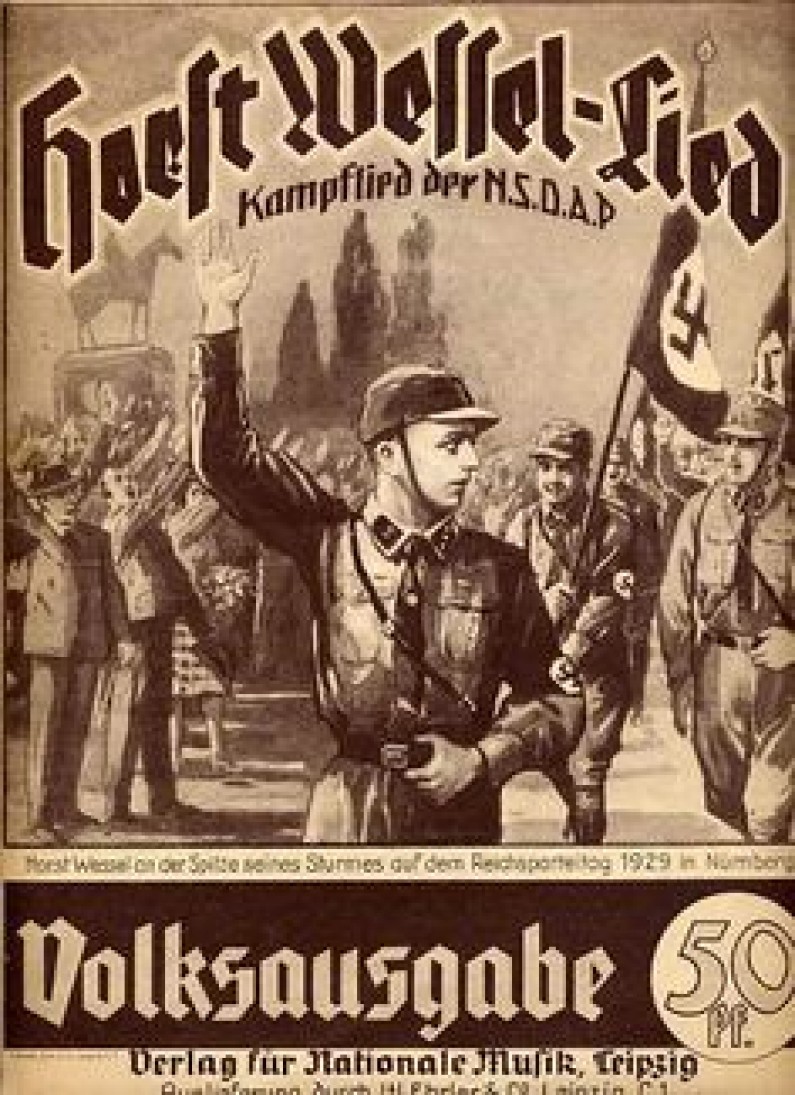Translation on the Margins of Possibility: Encounters with Satire

The question of whether certain texts, or indeed whole genres, are “impossible” to translate is one that always hovers over the theory and practice of translation. Translators themselves tend to reject the concept of impossibility. They have pragmatic reasons for doing so, since turning down an “impossible” task is not a luxury they can afford. More positively, the very challenge posed by the most difficult texts is precisely what makes the translator’s work enduringly fascinating and rewarding. Theorists, on the other hand, warn against a tendency towards triumphalism. They argue that untranslatability does, indeed should, exist. The following commentary looks at how questions of untranslatability played out when tackling two satirical texts.
Satire is under-translated as a genre and its translation appears to have received little attention from theorists compared with that of other genres. It is easy to speculate why. Unless it targets universal traits, satire is extremely context-specific. Why, then, should it even be translated at all? It will mean little to audiences in another context. If it is to be translated, how is the translator going to convey to a new audience what the author’s satirical target was? What can theorists offer in the face of what seems to be an “impossible” task? I would argue that satire does merit translation. It offers an insight into a specific time and place that is not available from other sources, and in this respect can only add to our knowledge. This leaves the question of how to translate. I would like to explore this using examples from two German texts that I have translated into English, one from the 1930s and one from the 1960s.
Satirising the heart of Nazism
This section considers the translation of a satirical text that circulated in Nazi Germany in the 1930s.1 This text is made up of two parts. The Horst-Wessel-Lied [Horst Wessel Song], the anthem of the Nazi Party, was intended to play a leading role in conveying key messages about unity, sacrifice and the path to victory. A contemporary satire reversed that message by highlighting deprivation, unemployment and inequality, signs that life for ordinary people under Nazism was very different from the picture given in the official message. Secondly, a series of jokes offered in the same pamphlet take as their target the rumoured involvement of Hermann Göring, at this time President of the Reichstag (parliament), in its burning down in February 1933.
The subject matter of this satirical text is clearly very context-specific (indeed, in the case of the jokes, specific to a particular event). The translator’s challenge, what pushes the text to the margins of being “impossible” to translate, is the need for a modern-day target audience to have some awareness of this context in order to appreciate that it is satirical at all. Conventional theory on tackling cultural deixis in translation tells us that the translator can consider options that range from borrowing, calque and literal translation on the one hand to transposition, modulation, equivalence and adaptation on the other.2 My encounter with this text suggests that these strategies do not overcome “untranslatability” when dealing with the kind of cultural deixis that satire entails.
Strategies that leave a satire in its original context produce a “translation,” but one that means little to the modern target audience. What, for example, would a reader today make of a literal translation of this joke?
Ein SA Mann flüstert dem andern zu: »Hast du schon gehört? Der Reichstag brennt!«
Der andere SA Mann erwidert: »Pst! Erst morgen!«
One SA man whispers to the other, ‘Have you heard the news? The Reichstag is on fire!’
The other SA man replies, ‘Shhhsh! Not until tomorrow!’
This clearly leaves unanswered questions. What is the SA? What is the Reichstag? Why would its burning be known in advance? Why is this satirical at all?
On the other hand, strategies designed to overcome cultural gaps by bringing a text into the target culture are equally unsatisfactory when it comes to satire. If, for example, the translator were to adapt these jokes so that they target a contemporary issue (if, indeed, an “equivalent” issue could be found), then again a “translation” would have been made, but their original aim, the very thing that makes them worth translating at all, would have been lost.
I would suggest, then, the satire takes the translator beyond “mere” cultural gaps and demands that he or she becomes an active explainer. Assuming that the satire is to remain connected with its original context, then that context needs to be set out for the target reader. How is this to be achieved? Paratextual explanation of some kind, or indeed several kinds, can plug the gaps. In the case of this satire, the fact that two of the jokes were already annotated by what seemed to be contemporary footnotes (perhaps reflecting that even some Germans of the 1930s would not have necessarily recognized their full satirical intent) set me in that direction.3 The use of footnotes should, of course, be carefully considered. They can, especially in large numbers, significantly change the text from its original format. This is not necessarily wrong, but must be done for clear reasons. In this case, the reason was pressing: If at least some footnotes were not offered, then the very premise of the text would not be translated. Thus my final translation of the entire section of satirical jokes offered this footnote:
Translator’s note: these jokes all refer to the rumoured involvement of Hermann Göring, at this time President of the Reichstag (parliament), in its burning down in February 1933. The paramilitary Sturmabteilung (SA; storm division) and its brown-shirted storm troopers were, from 1934, disempowered in favour of the Schutzstaffel (SS; protection squadron).
In the particular context in which these translations were made, I was also able to offer a short commentary in which I took the opportunity to comment more generally on the jokes’ position in relation to current events. Together, these two types of paratextual intervention served to explain, thus making the satire relevant to the modern reader, while at the same time aiming to not shift the text significantly from its original format.
Satire in East Germany
Here I consider how another satire, written in the German Democratic Republic (GDR, former East Germany), has again led me to consider satire’s “untranslatability.” Ottokar Domma began writing his stories about mischievous schoolboy Ottokar in the early 1960s. Although superficially amusing and harmless, they were actually sophisticated satires of people who too readily and unthinkingly parroted the precepts of socialism. They were first published individually in the satirical magazine Eulenspiegel and later gained a wider (and more child-oriented) audience through being published in book collections.
In these stories, much of the satire derives from what Ottokar hears around him of the language and themes of official discourse and then “innocently” replicates in garbled form, to humorous effect. The satirical target is those who endlessly repeat the slogans, formulations and obsessions of official discourse without any real understanding. When, for example, Ottokar talks of the need for parents to give their children names that are suitable for a time of ‘wissenschaftlich-technisch[er] Fortschritt’ [scientific-technical progress] and then suggests (apparently in all seriousness) ridiculous neologisms such as Traktorina and Motorus, he is satirising the excessive and pompous use of this term in GDR official discourse in the early 1960s by applying it to a comically mundane matter. Here, then, the target reader requires not only knowledge of contemporary events in the GDR (the kind of knowledge that was needed to make sense of the 1930s satirical jokes), but also knowledge of something less tangible, the “language” (in the broadest sense) of the time.
As with the 1930s satires, using strategies that are conventionally suggested for tackling cultural deixis is problematic with these stories. Keeping them in their source culture does allow the surface-level humour (that which derives from Ottokar’s puns, for example, and his mischievous exploits) to come through, but leaves the stories’ real purpose, their satirical intent, “untranslated.” On the other hand, bringing them into the target culture again gives the target reader no sense of their satirical purpose. The solution adopted for the 1930s satires, a limited amount of paratextual explanation, is also problematic here. I suggest that there is so much in these stories that requires explanation if their satirical nature is to be truly appreciated that the translator cannot just add one or two footnotes and leave the overall format unchanged.
So is this satire that is truly untranslatable? That ultimately depends, of course, on how “translation” is defined. I would certainly argue that this is a text that requires the translator to consider non-conventional approaches. It is necessary to acknowledge that it cannot be translated in a way that is “equivalent” to its source. This is by no means a sign of failure. It is, instead, a positive recognition that some source texts can take the translator in unexpected and fruitful directions. My response to this complex, multi-layered satire has, so far, taken two forms. The first has been a “thick” translation, using extensive paratextual explanation in the form of translator’s forewords to each story and detailed footnotes.4 Thus, for example, I offer the following footnote to explain Domma’s use of the term “Erfahrungsaustausch”
‘Knowledge exchange’ [Erfahrungsaustausch] was used extensively in official discourse in the GDR to describe exchange of knowledge between ‘brother countries’ and on specific subjects such as technology or education. Here Domma is applying it ironically to a rural setting. For example, Neues Deutschland reports in 1967 a visit by the Soviet Minister for Higher Education to Humboldt University in Berlin at which the need for ‘knowledge exchange’ about higher education was discussed.5
A “thick” translation of course moves the stories away from their original format. In the light of their resistance to translation conventionally, however, this seems inevitable. It can be regarded positively as a means of opening up the GDR, if not to the “same” audience as the stories would have attracted originally, but to a new audience of readers who are looking at it perhaps as an object of study.
My second response has been to build on the conventional strategy of adaptation to consider a creative rendering that mirrors Ottokar’s pseudo-innocent yet sharp observation of adults’ foibles and weaknesses. My modern-day versions take the form of a blog in which Ottokar, now renamed Ed, encounters and satirises the same issues that arose in the original stories: his parents’ inconsistencies, for example, and miscommunications with a pen pal from another culture.6 This is quite the opposite of seeking to bring the target reader into the GDR of the 1960s in order to understand the original satire. Instead, it seeks to draw on the stories’ satirical premise and imagine how Ottokar would write if he were writing today.
Conclusion
The case studies discussed here suggest that the highly culturally-specific nature of satire does not respond readily to conventional strategies for tackling cultural deixis. One might be led to conclude, then, that satire—which usually relies precisely on cultural specificity—is “untranslatable.” I believe that the approaches I have set out show that this is not the case. Satire certainly resists translation, if by “translation” we understand something fairly conventional. However, approaching the challenge from a broader perspective, and allowing challenge to foster creativity, can bring satire to new audiences. The form may not be the same, but the intent (that which, after all, is the translator’s main concern) has proved translatable after all.
1. The 1930s satirical texts can be found here. My translations were undertaken in the context of the Oxford German Network’s 2016 Olympiad.
2. Jean-Paul Vinay and Jean Darbelnet, translated and edited by Juan C. Sager and M.-J. Hamel, Comparative Stylistics of French and English: A methodology for translation (Amsterdam: John Benjamins Publishing Company, 1995), p. 31ff.
3. My translations can be found here.
4. The term ‘thick’ translation derives from ethnography and was first coined by Kwame Anthony Appiah: ‘Thick Translation’ in The Translation Studies Reader, ed. by Lawrence Venuti (London: Routledge, 2000), pp. 417-429.
5. “Gespräch mit Professoren: Minister Jeljutin besuchte Humboldt-Universität zu Berlin,” Neues Deutschland, 14/1/67, p. 1 <http://zefys.staatsbibliothek-berlin.de/ddr-presse/ergebnisanzeige/?> <accessed 10/09/16>.
6. More here.
Appiah, Kwame Anthony, “Thick Translation” in The Translation Studies Reader, ed. by Lawrence Venuti (London: Routledge, 2000), pp. 417–29
Vinay, Jean-Paul, and Jean Darbelnet, translated and edited by Juan C. Sager and M.-J. Hamel, Comparative Stylistics of French and English: A methodology for translation (Amsterdam: John Benjamins Publishing Company, 1995)




